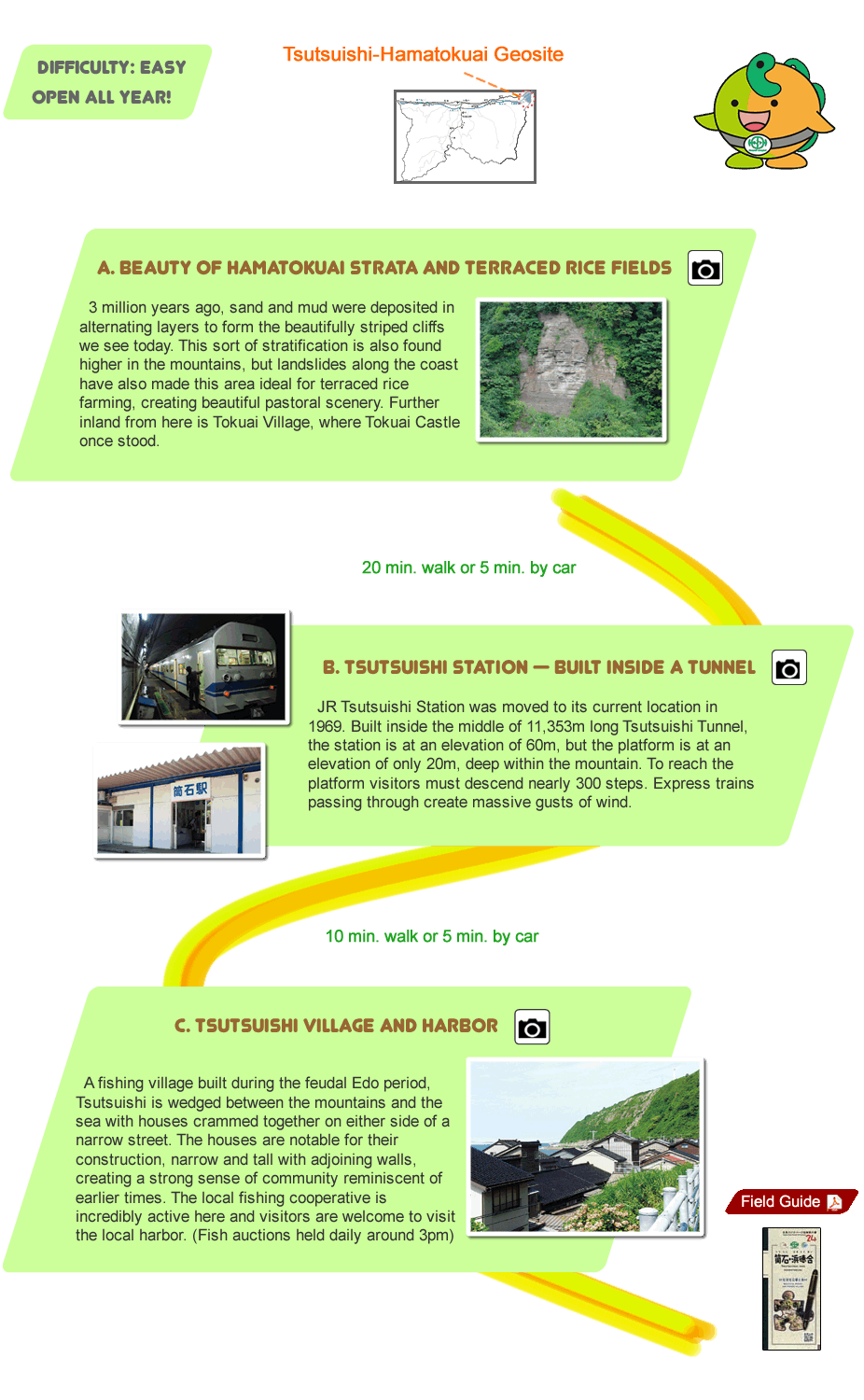Model Courses
- Number
- Area
Related Content
- Geosite
- Field Guide
At Hamatokuai you can see beautiful mudstone-sandstone stratification and terraced rice fields built atop the result of landslides. You can also see an unusual underground station and enjoy walking through a traditional fishing village.
- Geosite
- Tsutsuishi and Hamatokuai
- Time
- 90 mins.
- Walking
- Walking


